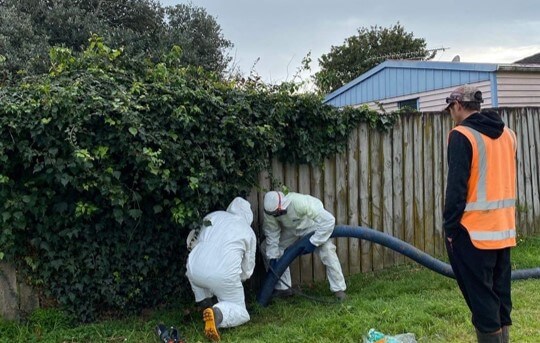Debunking Myths About Hydro Excavation: What You Need to Know

Hydro excavation is emerging as a game-changer in New Zealand in construction and environmental management. This modern technique revolutionises how we approach excavation, but it’s shrouded in myths. Let’s set the record straight and explore why it is becoming increasingly popular.
What is Hydro Excavation?
It is a cutting-edge process that uses high-pressure water to break up soil, which is then removed by a powerful vacuum system. This method is precise, efficient, and minimises the impact on the surrounding environment.
Myth #1: Hydro Excavation is More Expensive than Traditional Methods
It’s a common misconception that hydro excavation is more costly than traditional methods. It’s crucial to look beyond the initial price tag to fully grasp its financial benefits.
While the upfront cost of hydro excavation might seem higher, it’s important to consider its efficiency, precision, and the significantly reduced risk of collateral damage. These factors contribute to long-term cost savings and notably decrease labour costs.
Traditional methods like manual digging or using a digger often require more manpower and extended project durations. In contrast, with its targeted approach, hydro excavation reduces the need for extensive labour.
This makes hydro excavation a financially smart choice for a wide range of projects.
Myth #2: It’s Only Suitable for Large-Scale Projects
The notion that it is limited to large-scale projects needs to be clarified. Its versatility makes it apt for a broad spectrum of projects, regardless of their size.
Hydro excavation’s adaptability to scale and project types, precision, and efficiency make it an invaluable tool. It’s not just the scale that defines its suitability; it’s the nature of the project and the need for precision and care.
Myth #3: It’s Less Safe Than Traditional Excavation
Excavation is a crucial process in construction and other related industries. However, it can also be risky when dealing with underground utilities. Prioritising safety is essential in any excavation project.
One effective way to ensure safety is to use hydro excavation. This method involves using pressurised water and vacuum to excavate soil and other materials. Unlike traditional excavation methods, it has the risk of damaging underground utilities. This leads to fewer repairs and lower chances of accidents occurring on-site.
Myth #4: Hydro Excavation is Not Environmentally Friendly
This myth couldn’t be further from the truth. Hydro excavation is, in fact, one of the more environmentally friendly excavation methods available today.
It is not only friendly to the environment, but in many ways, it actively contributes to its protection. Its ability to perform precise, controlled excavation with minimal disruption to the surrounding ecosystem makes it an ideal choice for environmentally conscious projects in New Zealand.
Myth #5: It’s a Slow Process
The belief that hydro excavation is slower than traditional methods is a misconception. In many cases, it can significantly speed up the excavation process.
Its speed and efficiency, particularly in demanding conditions and complex urban environments, make it a time-saving choice for many projects. Its ability to quickly and accurately remove soil while minimising the need for additional work post-excavation demonstrates that it can often outpace traditional excavation methods in the project timeline.
Myth #6: The Utility Depth Can Be Estimated
When attempting to estimate the depth of underground utilities, using inadequate detection methods can be hazardous. Hydro excavation, however, provides a precise and non-destructive means of exposing utilities, thus ensuring accuracy and safety.
Utilising high-pressure water and vacuum systems minimises the risk of damage to nearby pipes and cables. This method is particularly useful in urban environments, where underground utility infrastructure is often complex and challenging to navigate.
Myth #7: I Can Dig In A Spot With No Marks
Excavating without proper utility locating can be extremely risky. It puts workers and bystanders in danger of electrocution, gas leaks, and other serious accidents. However, with the help of hydro excavation, hidden utilities can be safely exposed even in unmarked areas.
It enables accurate and meticulous excavation, reducing the likelihood of harm to essential infrastructure and keeping all safe. So, if you’re planning a construction project or any type of excavation work, prioritise the security of your workers and the public by using it to locate utilities before you start digging.
Conclusion
Hydro excavation is a forward-thinking approach to construction that prioritises environmental conservation. This cutting-edge technology can enhance your construction capabilities and protect our planet for future generations.
If you want to learn more about hydro excavation services, we highly recommend contacting Drain Ninjas. We are at the forefront of this innovative field and can provide valuable insights into its benefits.
Call us today to further explore our hydro excavation services at 0800 464 652.
Similar Posts
Pre-Sale Septic Tank Cleaning: Maximising Your Property Value
Preparing an Auckland property for sale involves numerous details, each potentially affecting your final sale price and buyer interest. While sellers often focus on cosmetic…
Read MoreSeptic Tank Cleaning Before Spring: Why Late Winter is the Perfect Time
Regular septic tank cleaning is essential for every Auckland property, but strategic timing can significantly improve your system’s performance and longevity. Many homeowners don’t realise…
Read MoreSeptic Tank Cleaning for Multi-Unit Properties: Managing Shared Systems
Managing septic tank cleaning for multi-unit properties presents unique challenges that single-family homes rarely face. Whether you’re a body corporate manager overseeing townhouses, a property…
Read More December 19, 2023
December 19, 2023  Tips & Tricks
Tips & Tricks